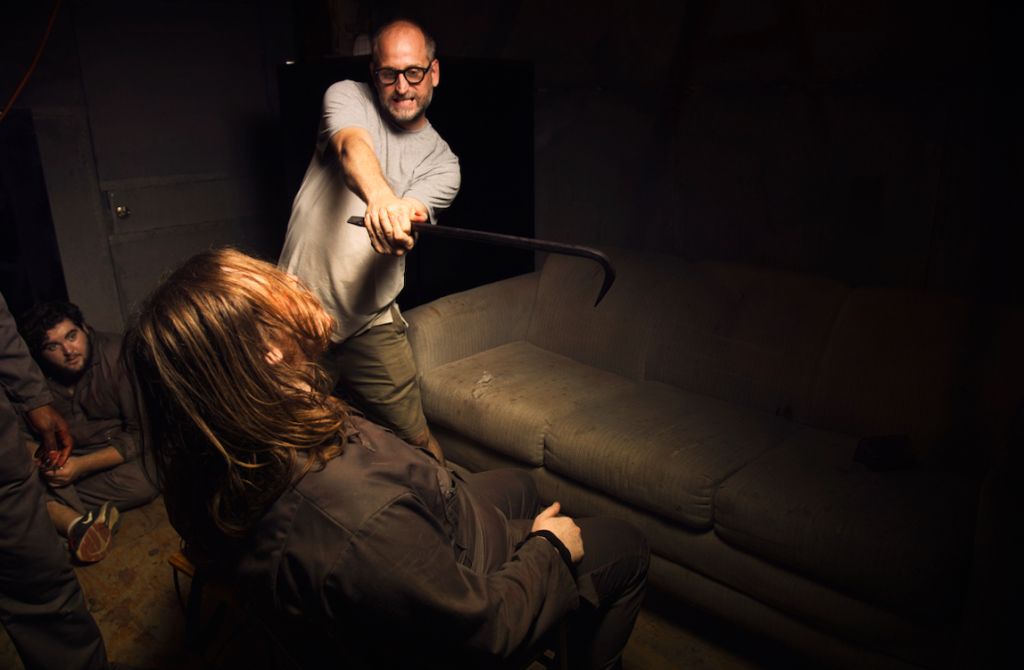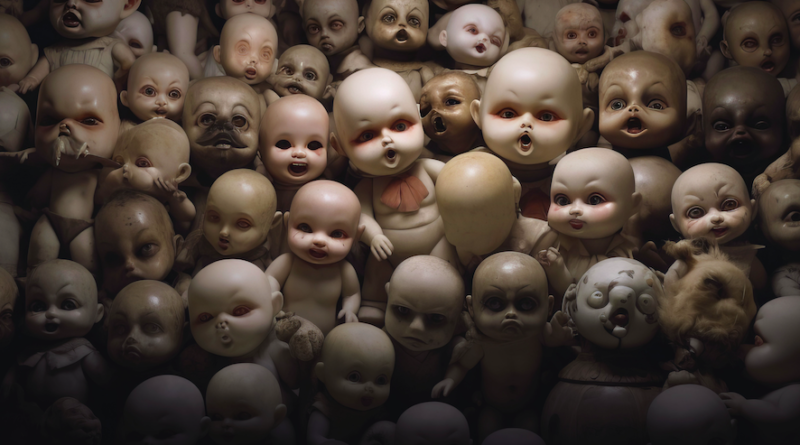INTERVIEW: Timothy Haskell is in the business of nightmares
Photo: Nightmare Dollhouse, written and directed by Timothy Haskell, begins Friday, Oct. 13. Photo courtesy of Psycho Clan / Provided by DARR Publicity with permission.
For many years, Timothy Haskell has lived and breathed theatrical nightmares. As writer and director of the annual Nightmare Haunted House in New York City, he and his company, Psycho Clan, are tasked with developing scares for an audience that grows and grows year after year. This season’s installment is called Nightmare Dollhouse, an experience inspired by roadside oddities and evil dolls. Think of a mixture between House of a 1,000 Corpses and Dead Silence.
The frights begin Friday, Oct. 13 — a perfect starting date — and continue until Tuesday, Oct. 31 — a perfect ending date. The immersive horror experience is located on the Lower East Side of Manhattan on Suffolk Street. Advance booking is recommended.
When describing the experience of Nightmare Dollhouse, a news release uses a lot of Halloween words that will send a chill up the spine: soul, evil, bloodcurdling and beware. This sounds like the perfect October entertainment for audiences, both young and old, but not too young. Patrons need to be 16 without a guardian, or 12-15 with a guardian.
Helping Haskell bring this vision to life is Psycho Clan’s Paul Smithyman, the production designer of Nightmare Dollhouse, and ETR Ventures, co-presenter of the haunted attraction.
Recently Haskell exchanged emails with Hollywood Soapbox in order to delve deeper into the macabre. Questions and answers have been slightly edited for style.
You have been in the scare business (in addition to the theater business) for quite some time. What do you love about these haunted attractions?
The reason I started them in the first place was after coming off a string of off-Broadway successes, I wanted to keep the momentum going. In college, I specialized in directing environmental theater, but I hadn’t been able to explore that fully professionally. So the first year was very theatrical. In fact, I collaborated with a bunch of theater companies to make their own rooms in the house. I called it Haunted House. It was immersive theatre before that term was widely used. Knowing that I had something, I expanded on it and created the whole thing myself, ramping up the theatricality so that there was a complete narrative, a beginning, middle and end, a climax, etc. I treat them like I would treat any of my shows, and that’s what I love about it. Horror is a genre where your imagination has no limits. You can do any idea, and it works. So I absolutely love the opportunity for the depths of your creativity.
How would you describe the premise for this years’ experience?
It’s as if you are patrons at a doll museum that you stumbled upon while taking off-roads on a car drive that seems quirky and fun, but when you go in, it has something sinister in the air. But you press through thinking that’s part of the charm, and it was. But then the dolls in the museum become animated and are slaughtering the staff at the same time you are visiting — wrong place at the wrong time. Now you are doomed.
Have you yourself experienced some strange roadside oddities? Do tell!
I grew up mostly in Atlanta, Georgia, after we moved there when I was 6 years old, but a lot of my extended family still lived in New York. And we would drive back and forth once a year. Along the way there are several dinosaur parks that we would get a kick out of going to where [there] were outdoor sculptures of dinosaurs made out of fiberglass. As I got older I realized how truly dreadful they were as sculptures and could envision that the person who owned the place made all the dinosaurs and thought they were really good at it. There have been many others, but that place has left its mark on me.
What do you believe is the limit on what haunted houses can do/show? This should still be fun, right?
Look, I know there are people who want to treat these as S&M chambers or have it feel like their lives are truly in danger because, in fact, they may be. I feel like those are niche experiences that a large enough number of people enjoy, but certainly not for most. I want our experiences to feel like you are in a horror movie — not living a horror movie. We embrace the theatricality. I guess the line is where real people get hurt because of some “extreme” thing someone put you through.
With only a limited run of dates, do you have to pack people in to maximize your chance of turning a profit? Are the finances of haunted houses scary, too?
It would be very helpful if a lot of people came, but we don’t ruin the experience by overselling or creating conga lines by pushing people through. We have a set show with a set distance between groups, and when we sell out, we sell out. But if we sold out, it would do pretty well.
Why do people like to be scared?
Laugh, cry, scream … same endorphins. It’s pathos. It’s cathartic. It’s an adrenaline rush. It also feels like an accomplishment for many to tackle this fear and come out the other side. Finally, it’s also the community nature of it. Experiencing something like this with your friends and loved ones is much more thrilling and bonding than going bowling.
By John Soltes / Publisher / John@HollywoodSoapbox.com
Nightmare Dollhouse, co-presented by Psycho Clan and ETR Ventures, begins Friday, Oct. 13 on Suffolk Street on the Lower East Side of Manhattan. Timothy Haskell serves as writer and director. Click here for more information and tickets.


